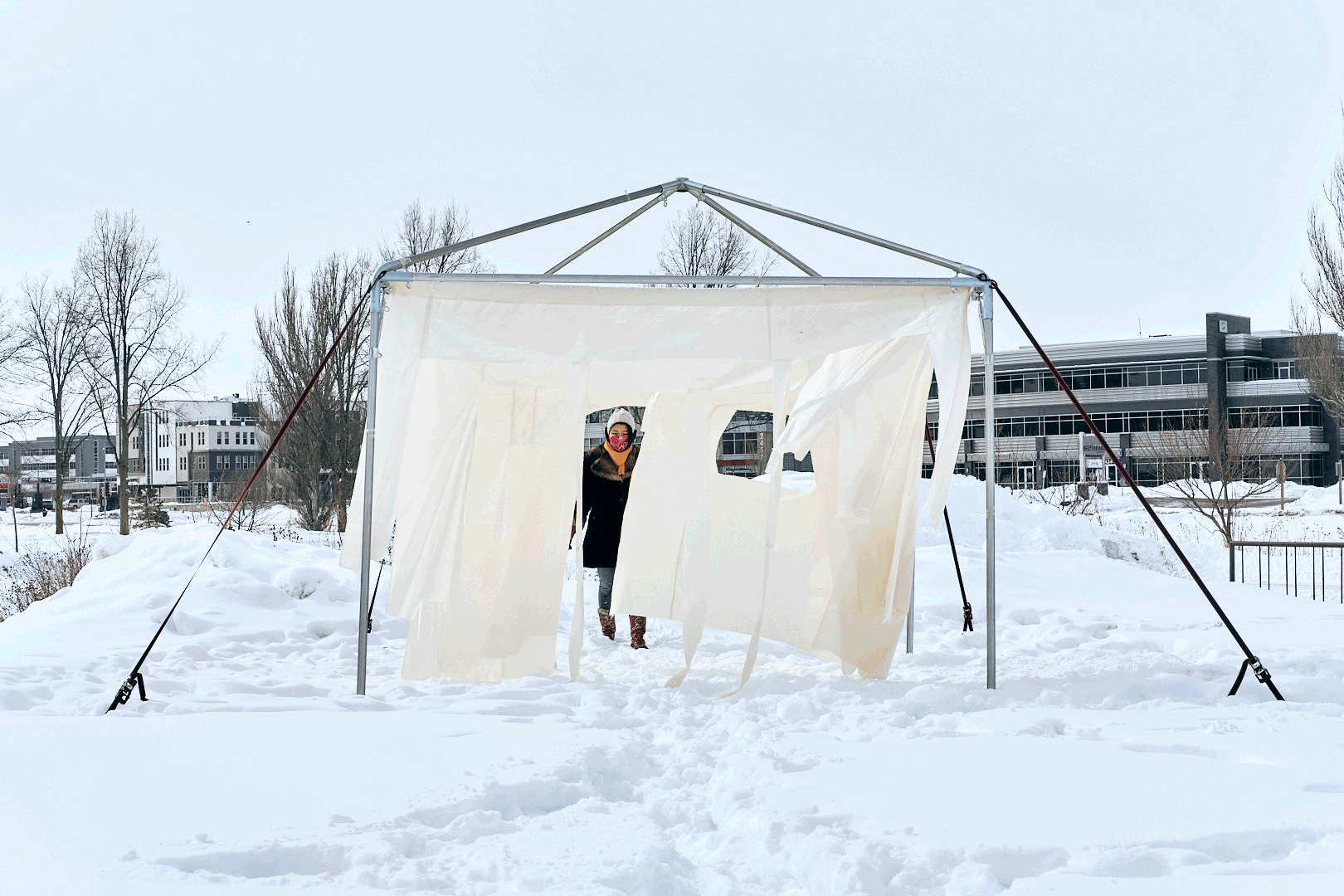
Eroding House art installation moving in the wind
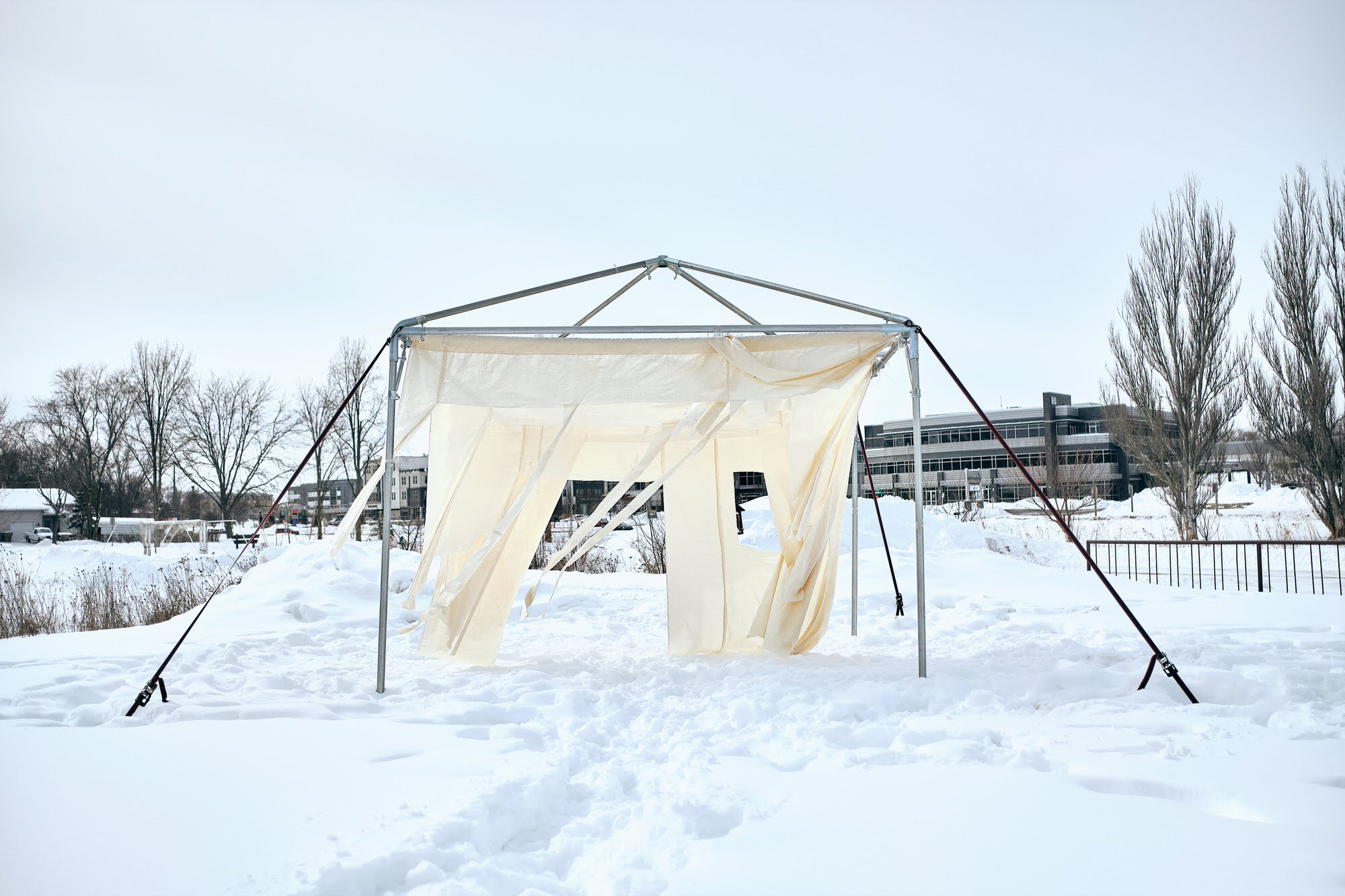
Eroding House art installation front view blocking the condominium
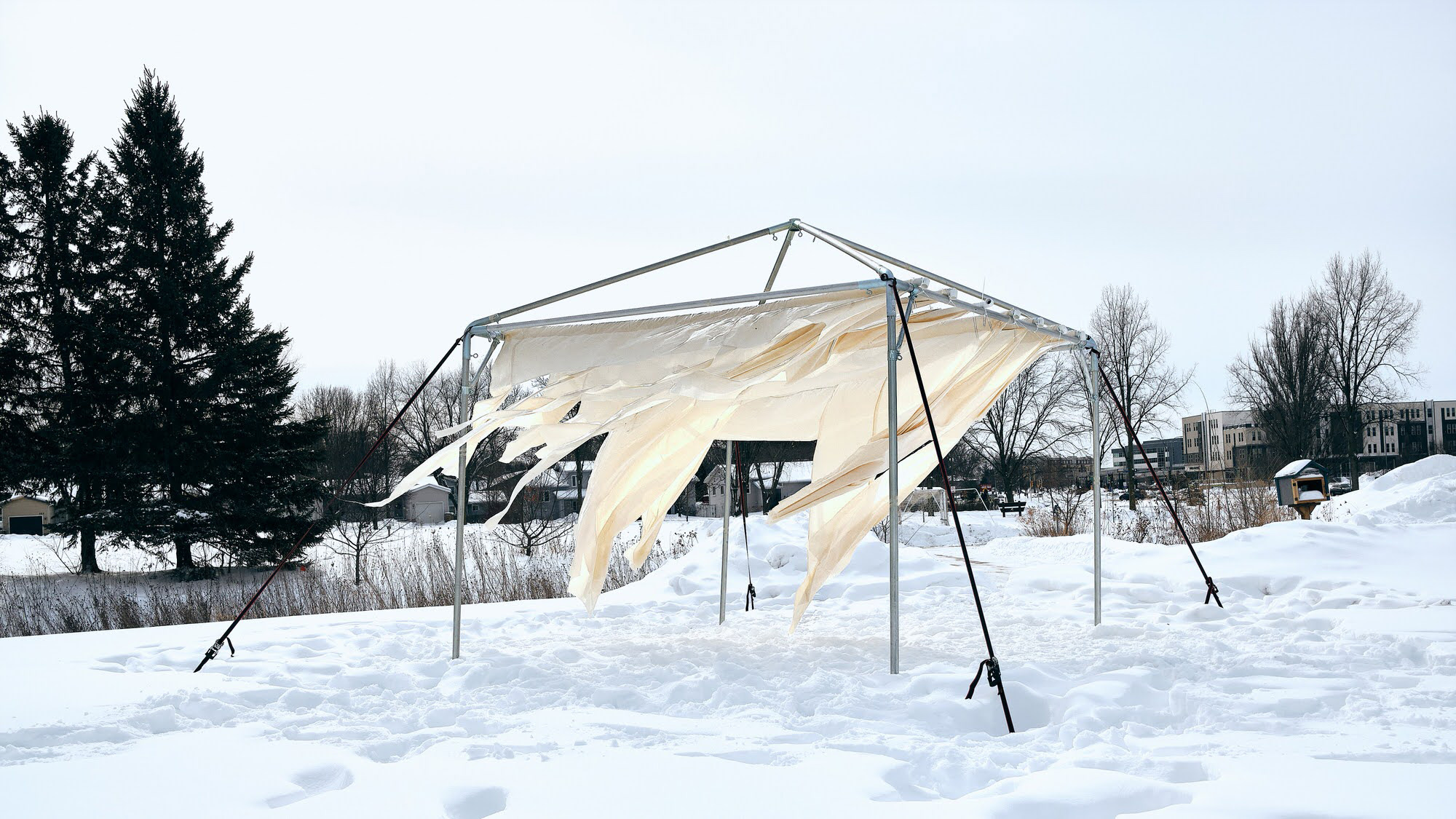
Eroding House art installation 3/4 view with visibility of the neighborhood
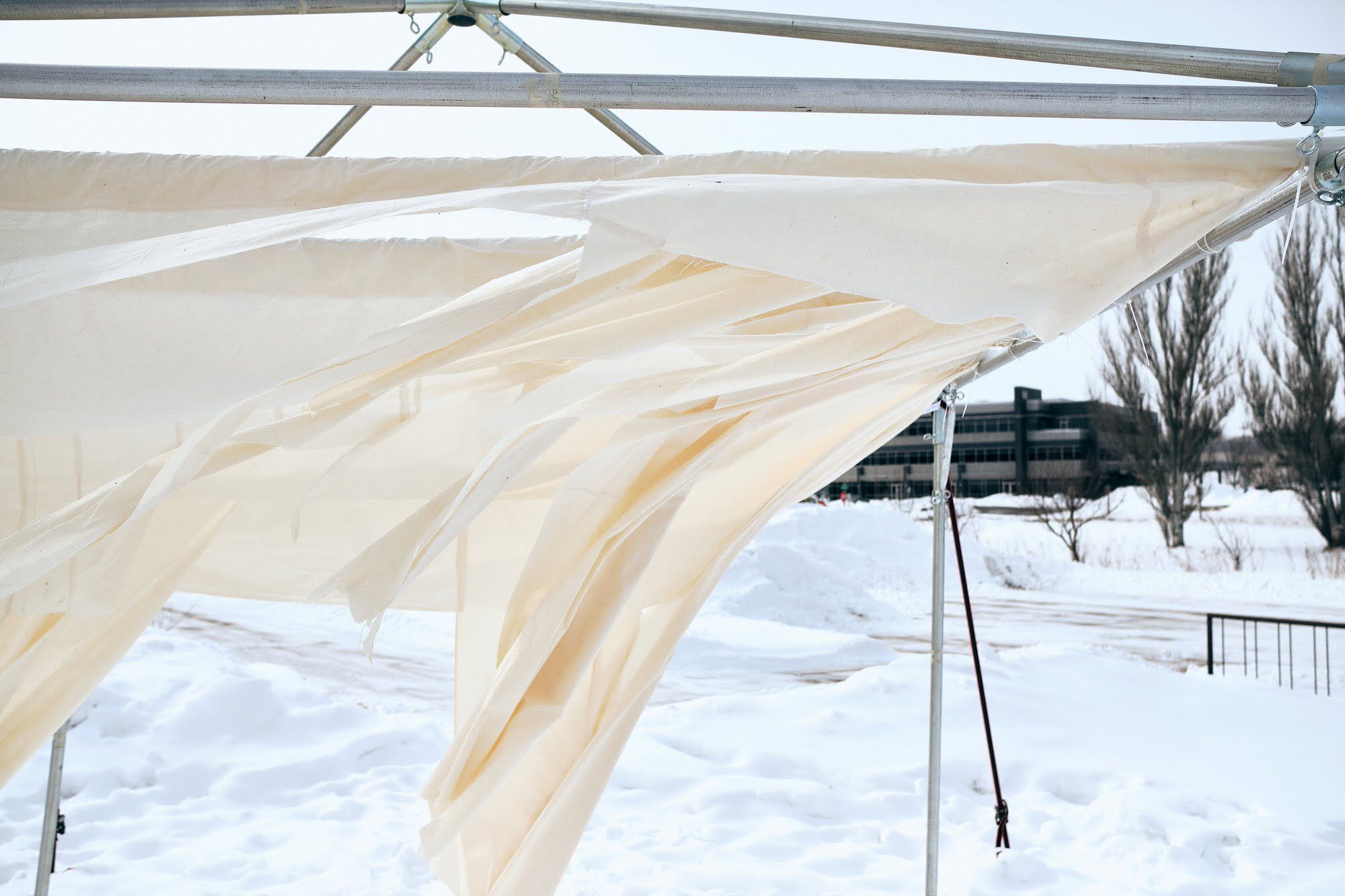
Close-up of Eroding House
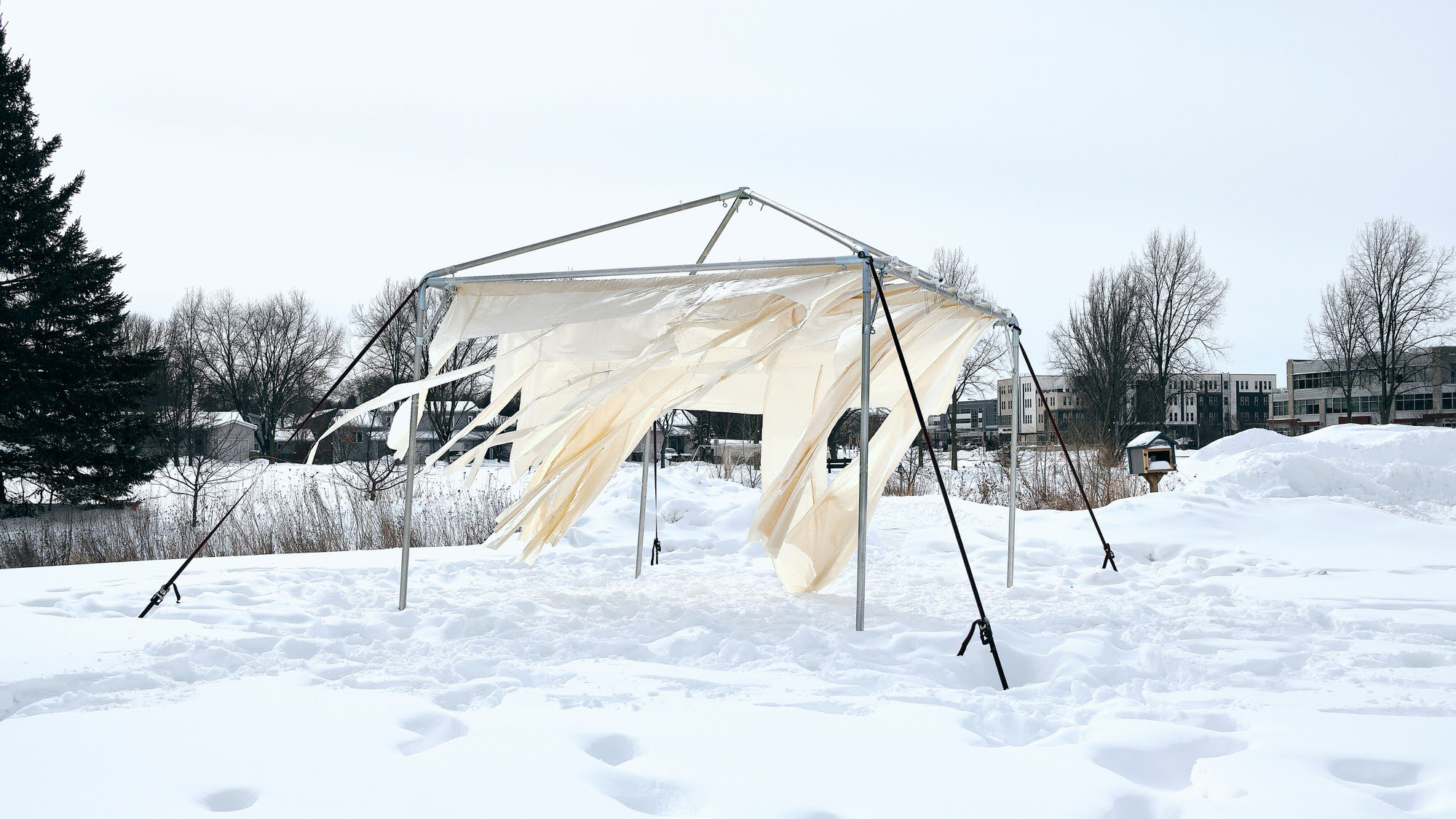
Eroding House moving in the wind
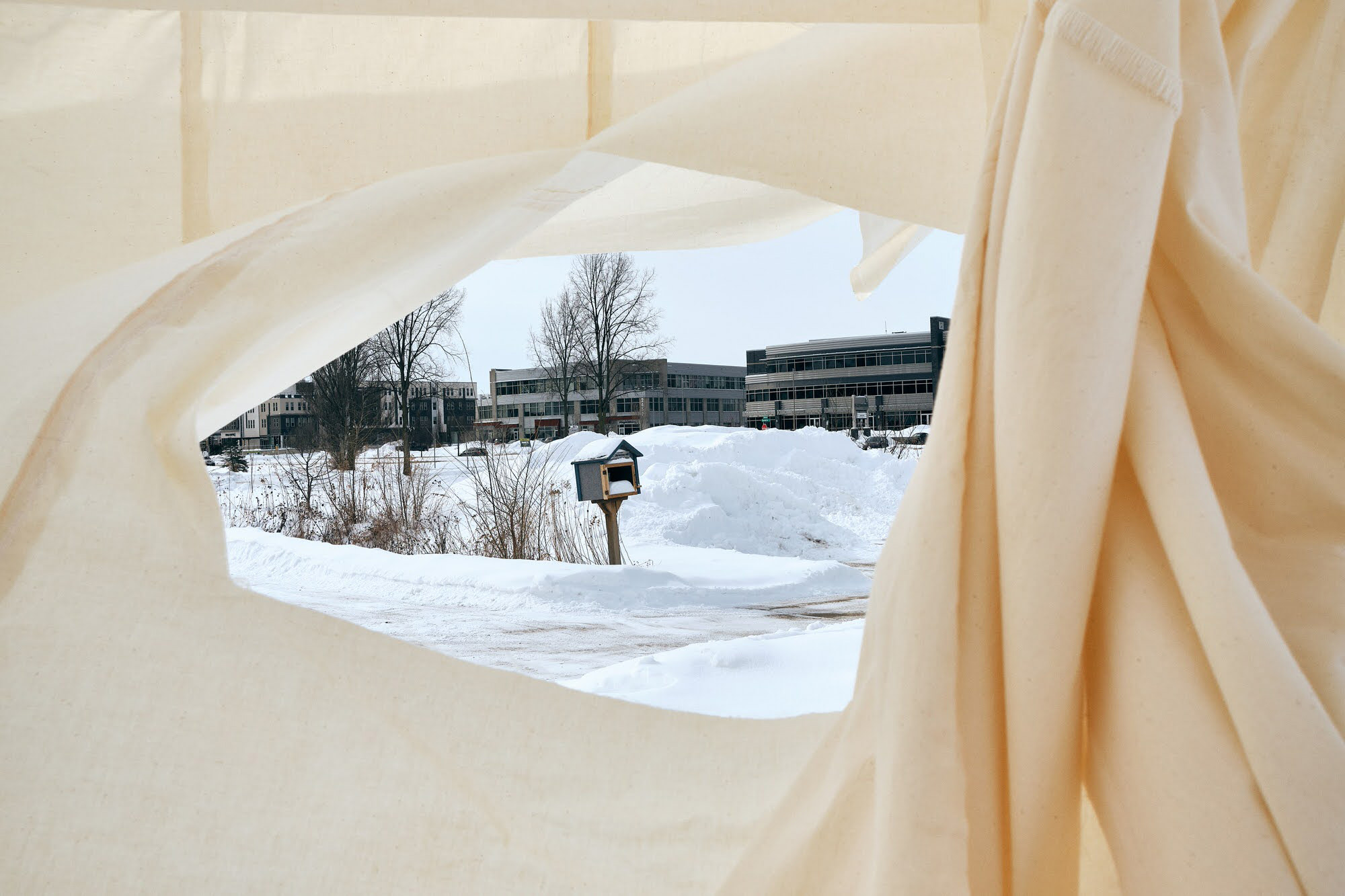
Eroding House art installation detail shot of muslin and stitches
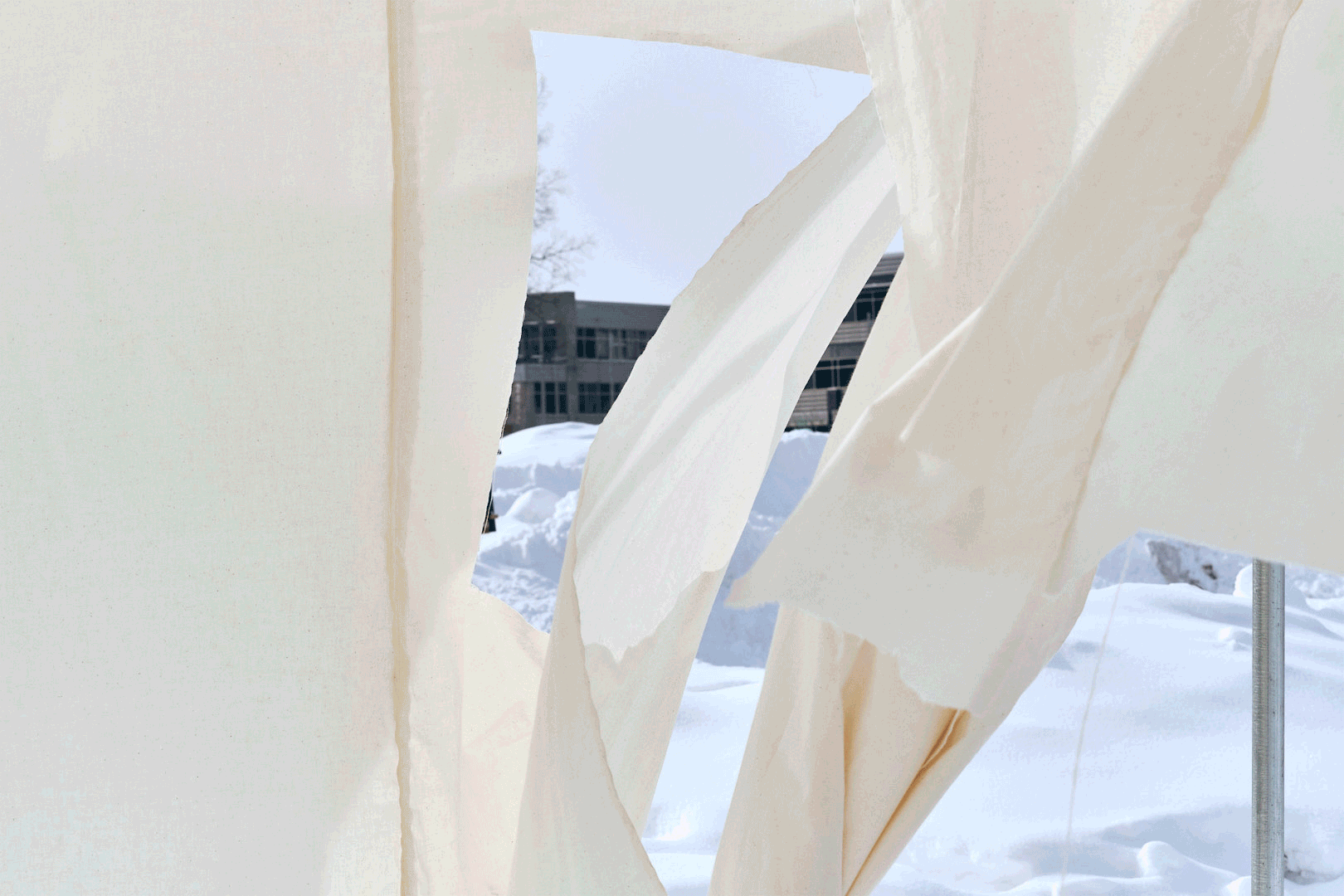
Eroding House art installation detail shot of muslin and stitches
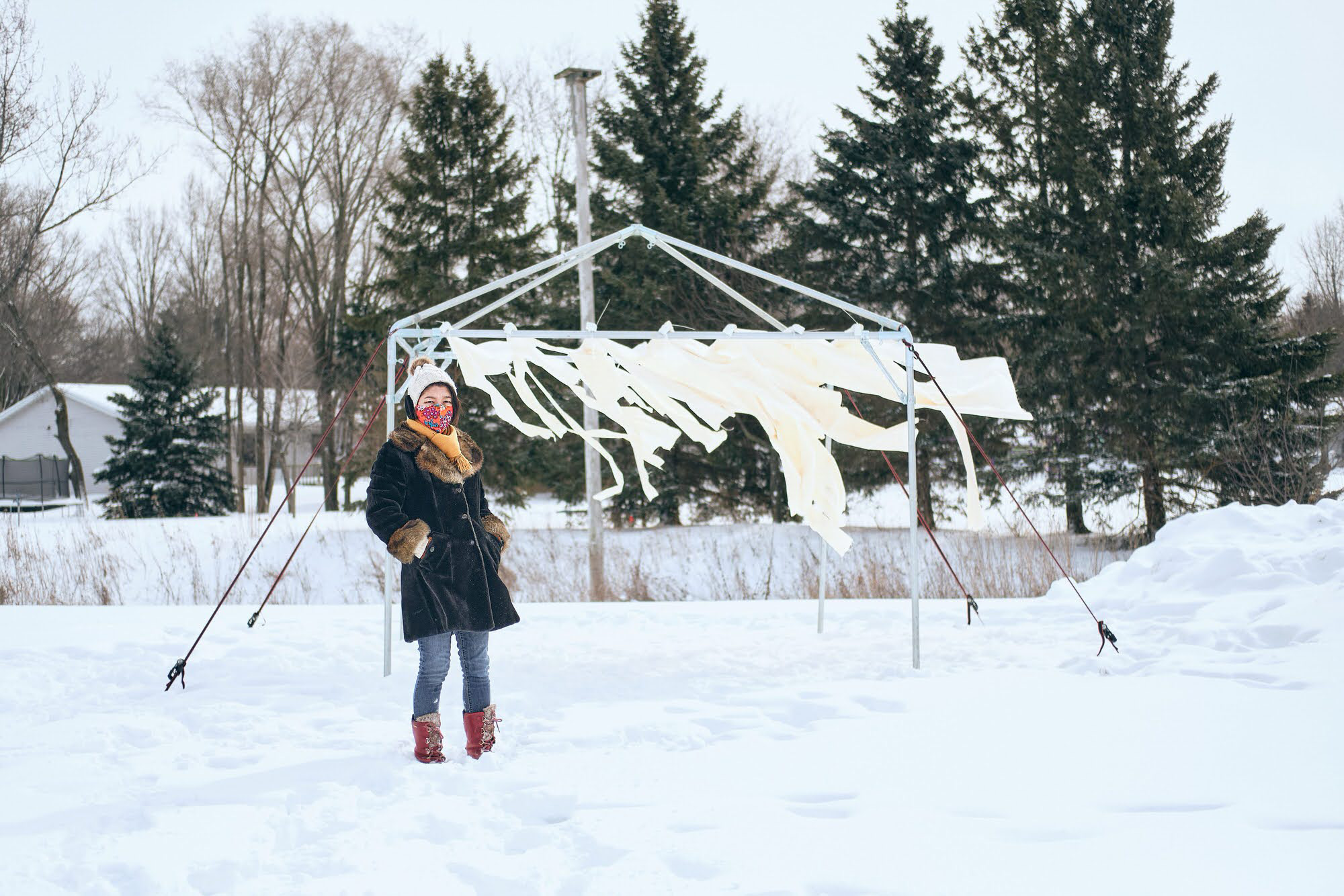
Artist Jenie Gao with The Eroding House

Artist Jenie Gao close-up portrait with The Eroding House

Artist Jenie Gao close-up portrait with The Eroding House
Title: The Eroding House
Medium: muslin fabric, stitches, PVC pipe + wire + tent infrastructure.
Dimensions: 10 x 10 x 12 feet
Photographer: Truzon Thao